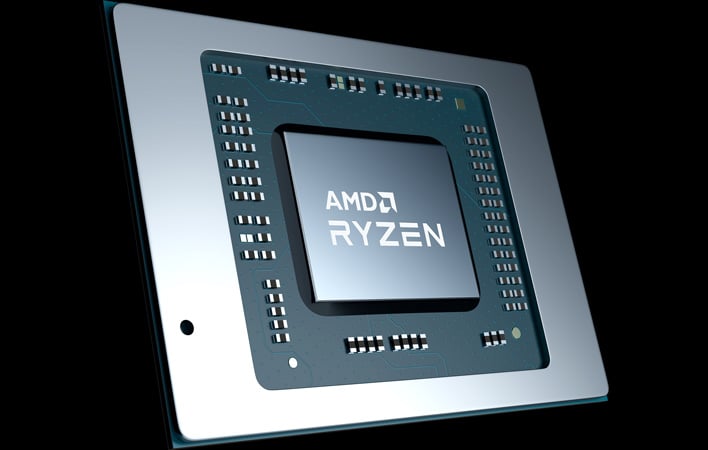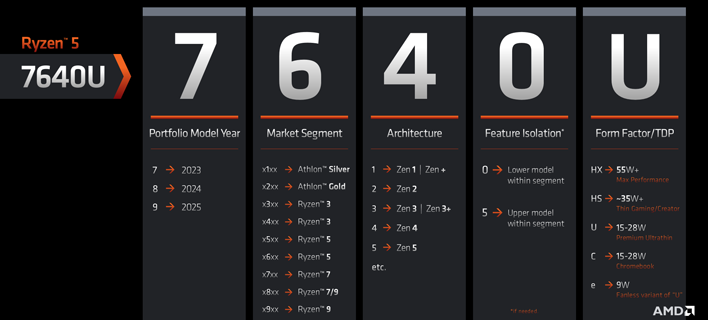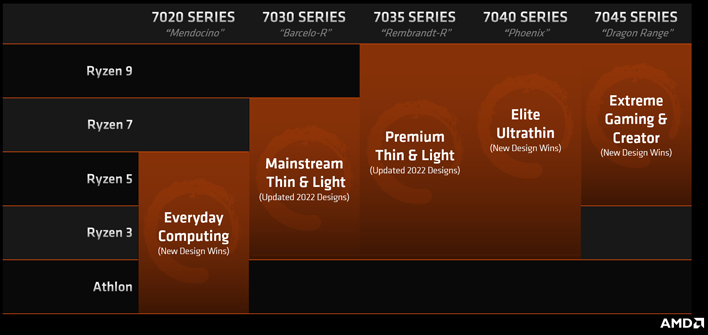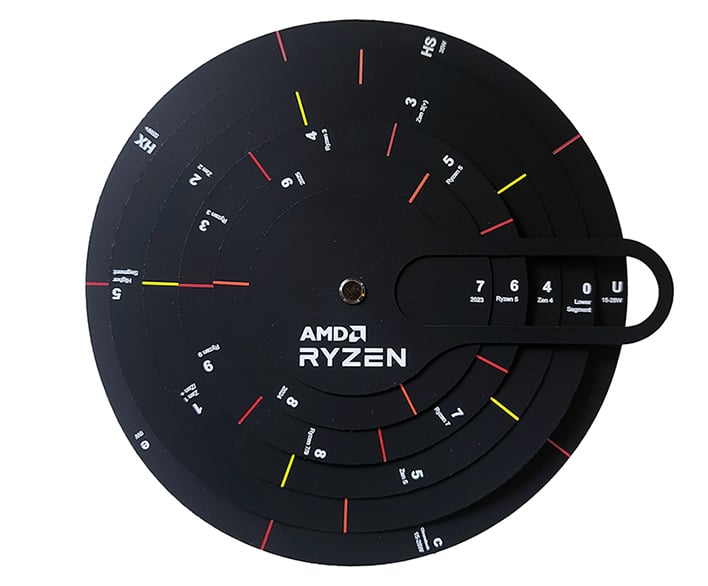Here's How To Decode AMD's New Naming Schemes For Upcoming Mobile Ryzen Processors

The new model numbers will look similar to AMD’s existing products at first glance. The new product names also consist of five—or sometimes six with -HX and -HS suffixes—characters, but each digit has now been assigned a specific meaning.
Under this new system, the digits reflect in sequence: portfolio model year, market segment, architecture, feature isolation, and target formfactor or TDP. This sequencing sounds logical enough, once we break their meanings down further, but the implications can be somewhat murky as they relate to some of AMD’s promises about the system.
Specifically, AMD’s Robert Hallock states in a blog post, “If you don't know much about what’s inside a processor, a bigger number will simply give you more CPU performance.” The statement sounds intuitive and promising, but will it be universally true?
Within a given “product portfolio” year, most likely. The given example of a Ryzen 5 7640U ought to outperform a theoretical Ryzen 3 7345U. What happens next year, though, when a Ryzen 5 8540U is released? Let’s break down what these numbers would mean.
The Ryzen 5 7640U represents a processor in the 2023 product family, within the Ryzen 5 segment, using a Zen 4 architecture, within the lower model segment, and at a TDP intended for ultrathin notebooks. That is a lot to express in a single sentence, which the product naming does help if you decipher each digit. However, the theoretical Ryzen 5 8540U breaks down to the 2024 product family in the Ryzen 5 segment, using Zen 4 architecture, also at the lower model segment, but with a similar TDP. A bigger number—8540 vs 7640—should be better, but is it?
With the new mixed architecture approach to naming, that first digit can lead to some ambiguity. If we chop that digit off, it reveals that the Ryzen 5 8540U fall within a lower market segment in the product stack while using the same architecture—540 vs 640—it is simply newer and not necessarily higher-end.
Chip manufacturers almost always lead with the model generation or release year—see the Intel Core i9-12900K and the Core i9-13900K, NVIDIA’s GeForce RTX 3080 and RTX 4080, or previous-gen Ryzen processors. However, one must be cautious when making broad statements that the bigger number is always better. Things get particularly dicey when AMD’s logic suggests a difference between chips that technically only differ by the year they were released and could be functionally identical. The RTX 3080 and RTX 4080 use fundamentally different architectures where similarly named AMD Ryzen 5 7640U and Ryzen 5 8640U processors would both use the same Zen 4 architecture.
The second digit could also lead to some confusion. For example, x3xx and x4xx chips can both designate Ryzen 3 tiers, so presumably the latter is positioned higher in the segment, but what does this mean for an x3x5 chip (higher model within segment) compared to an x4x0 chip (lower model within segment)? AMD’s full explanation indicates the xxx5 model chips correspond to refreshed architectures—e.g. Zen 3+ rather than Zen 3. These refreshes could potentially leapfrog the performance of non-refreshed architectures in the next segment up.
But we digress. If you are still confused about what a particular model number means, AMD has created a handy decoder ring and a digital version may be online as some point as well. Spin the 5 wheels to match up with the product you are looking at, then follow the descriptors to see what configuration it uses. This decoder ring was just a fun widget given out during AMD's briefings on the new naming. Although many model numbers can be generated with it, as has historically been the case, AMD will only be releasing a select number of new mobile processors each year.
So, decode away, but keep in mind the model numbers alone will not always be an indicator of relative performance. We like the architectural transparency, but consumers will still need to turn to third-party reviewers like HotHardware to know where a product stands. This is particularly important as a mobile processor’s potential is not defined by feature sets and architecture alone. Mobile platforms are often power or thermally constrained and may not align the same way from one manufacturer’s formfactor to the next.




